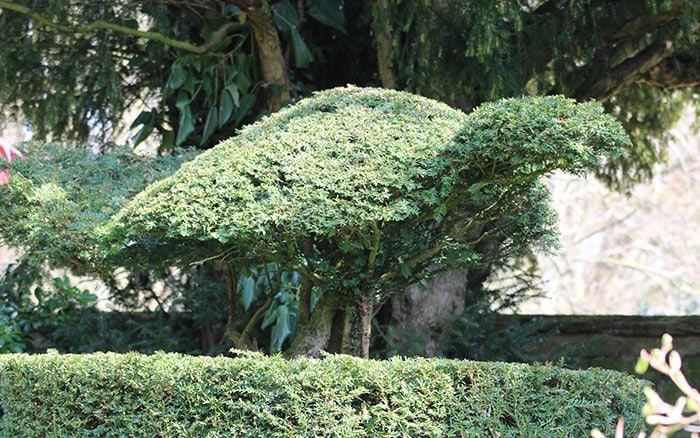When it comes to kitting out your garden in lush green life, you may want to achieve neat, streamlined edges in the form of tidy topiary and manicured lawns.
Striking sculptures
The architectural art of sculpting shrubs and trimming trees is a popular past time amongst many horticulturists. From simple designs to sophisticated lines, the pruning of plants is practiced to look pleasing to the eye.
Known as ‘living sculptures’, they have a classical quality which became popular in Britain during the 17th century.

When picking the plants, smaller shrubs with a dense foliage work best. The trick is to pick plants that can stay in place even before being clipped. Using large boxed hedges, you can produce what is known as a parterre garden. This is a formal garden in symmetrical patterns.
Choose evergreen Buxus sempervirens (box) and Taxus baccata (yew tree) which keep their foliage all year round.
Holly and ivy are more than just festive favourites. Instead, these plants also make for popular garden additions as they can be easily clipped to keep their shaggy appearance in shape.
You want to cut just above the leaf, starting at the bottom branches and working your way up. Ideally, these will cut back twice a year, first around spring and again when it’s started to grow out by the summer.
Keeping on top of trimming and training doesn’t have to be strenuous. With precision cutting tools that are right for the job, you’ll create some truly tremendous topiary.
Wonderful for wildlife

Why not use this as an opportunity to encourage friendly visitors to your garden?
Although wildlife favours a garden that’s plentiful, there’s no reason why topiary and garden wildlife can’t go hand in hand.
Shaping plants that are particularly favourable, such as holly and yew, will not only look fantastic but also attract birds and butterflies too. Hedera helix (ivy) offers dense foliage that acts as a good shelter all year round to an array of wildlife, in particular garden birds—even as a trimmed topiary plant!
Of course, be mindful not to disturb our feathered friends when pruning in the springtime.
Birds, such as robins and dunnocks may have set up home amongst the leaves. Also, conifers should be left well alone during nesting season as trimming it back can disturb your hatchlings.

Leave A Comment